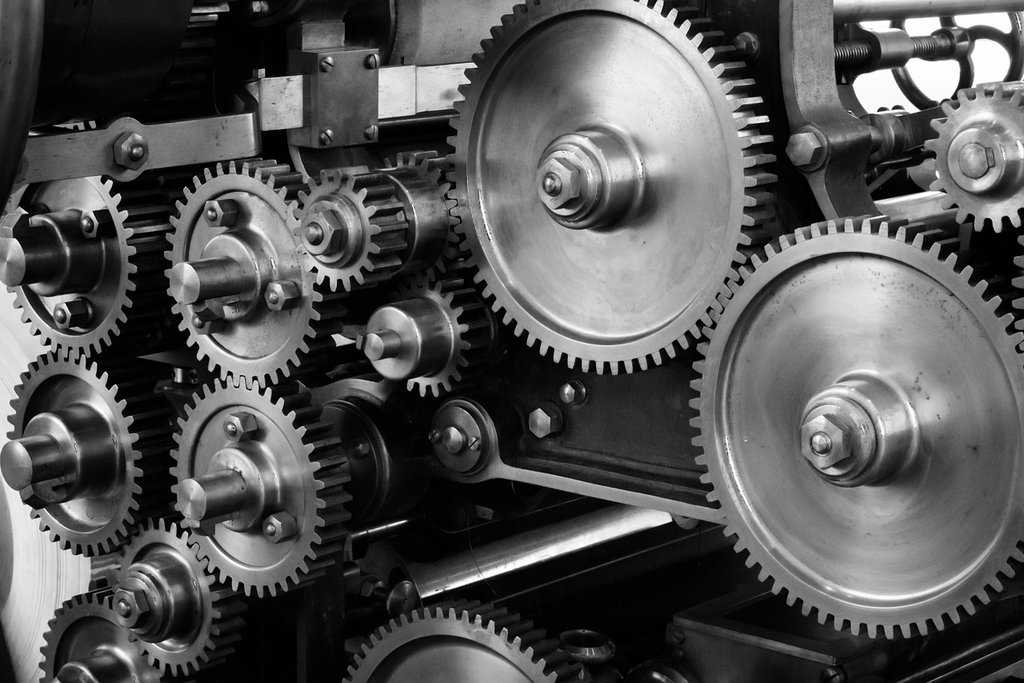ZIMSEC O Level Combined Science Notes: Machines: Gears
- A gear is a toothed wheel
- These toothed wheels transfer motion to one another using their teeth
- Gears are also known as cogs wheels
- The teeth on a gear are also known as cogs
- These cog wheels are usually mounted on shafts
- The teeth of adjacent cogs fit the grooves of the cog next to it
- This is known as meshing
- The teeth of two or more cog wheels mesh into each other
- When one of the gears rotates motion is transferred to the next gear by these teeth

Meshed gears
- In machines such as a vehicle’s gear box the gears have different cogs (teeth)
- When a vehicle is in low gear there are more cogs in one wheel than the other
- This changes the velocity ratio
- In the example above the larger gear has 24 cogs while the smaller wheel has 12 cogs
- In this case the smaller gear is the effort gear
- While the larger gear is the load gear
- The velocity ratio in this case is found using the formula:
- \text{ Velocity Ratio= } \dfrac{\text{Number of teeth on load gear}}{\text{Number of teeth effort gear}}
- VR=\dfrac{24}{12}
- 2
- This means the smaller gear turns twice for each time the load gear turns
- If a car’s gear lever is used to move the car into a higher gear
- Different gears are meshed for example as shown above
- Each of these gears has 14 teeth
- The Velocity Ratio is thus:
- VR=\dfrac{14}{14}
- 1
- The Mechanical advantage is also found using the formula above
- Assuming a friction of 0
- The Mechanical Advantage is the same as the Velocity Ratio of the gears
To access more topics go to the Combined Science Notes pag



